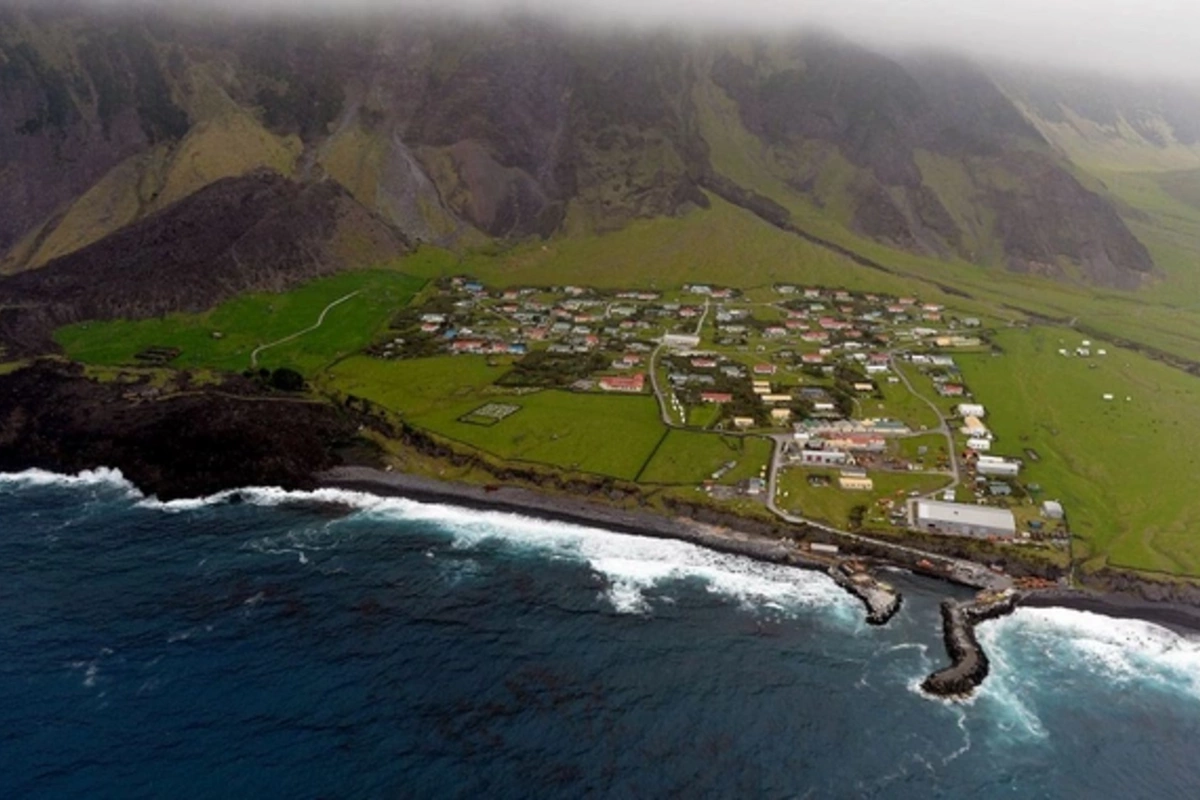07 Jun , 11:56
0

If you are one of those experienced travelers who is no longer impressed by Venetian canals, Carpathian landscapes, or the neon streets of Tokyo, perhaps it's time to discover one of the most unusual and isolated places in the world - the city of Edinburgh. But not in Scotland, rather in the very heart of the South Atlantic - on the island of Tristan da Cunha.
Edinburgh of the Seven Seas is the capital of the British overseas territory that includes the islands of Saint Helena, Ascension, and Tristan da Cunha. According to Business Insider, you should plan your trip here at least a year in advance - not because of the influx of tourists, but due to the extreme inaccessibility of this corner lost in the ocean.
Tristan da Cunha is a tiny volcanic island located 2,800 km from South Africa and 3,200 km from the coast of South America. You can only get there by sea: approximately once a month, a mail ship departs from Cape Town. The sea journey takes about a week, and before this, you need to obtain special permission to visit from the local administration.
Currently, only 209 people live in Edinburgh of the Seven Seas. It's more of a large village than a city. Almost all local residents are descendants of the first settlers who arrived here more than two centuries ago. Not surprisingly, everyone here knows each other by sight, helps their neighbors, and jointly raises children. The crime rate on the island is practically zero.
The island's economy is based predominantly on fishing and exporting seafood, especially a local species of lobster. Tourism is playing an increasingly important role, although it is quite peculiar here: there are few travelers, infrastructure is practically non-existent, and accommodation is offered in the homes of local residents - for 65 pounds sterling (approximately 88 dollars per night).
Guests on the island are welcomed with exceptional hospitality: the "hotel package" can include everything - from home-cooked meals to sleeping bags and candles. Interestingly, the local museum sometimes also functions as a guest house.
The islanders grow vegetables (mainly potatoes) by hand - machinery is too expensive, as all fuel and spare parts must be delivered from the mainland. Each family is allowed to keep only one dairy cow - to avoid disrupting the fragile ecological balance.
More than 40% of the island's territory is declared a protected area. Rare bird species, northern penguins, and albatrosses live here. The settlement itself has everything necessary for life: a school, library, shop, bar, hospital, internet cafe, and even a stage for events - though all of this is designed for an audience of just 200 people.
As for entertainment, the choices are limited. The main attraction is the volcano, on the slopes of which the settlement is located. In 1961, it nearly destroyed Edinburgh with a powerful eruption, and the residents were evacuated to Great Britain. However, after two years, almost everyone returned home - to one of the most secluded, quiet, and safe places on our planet.